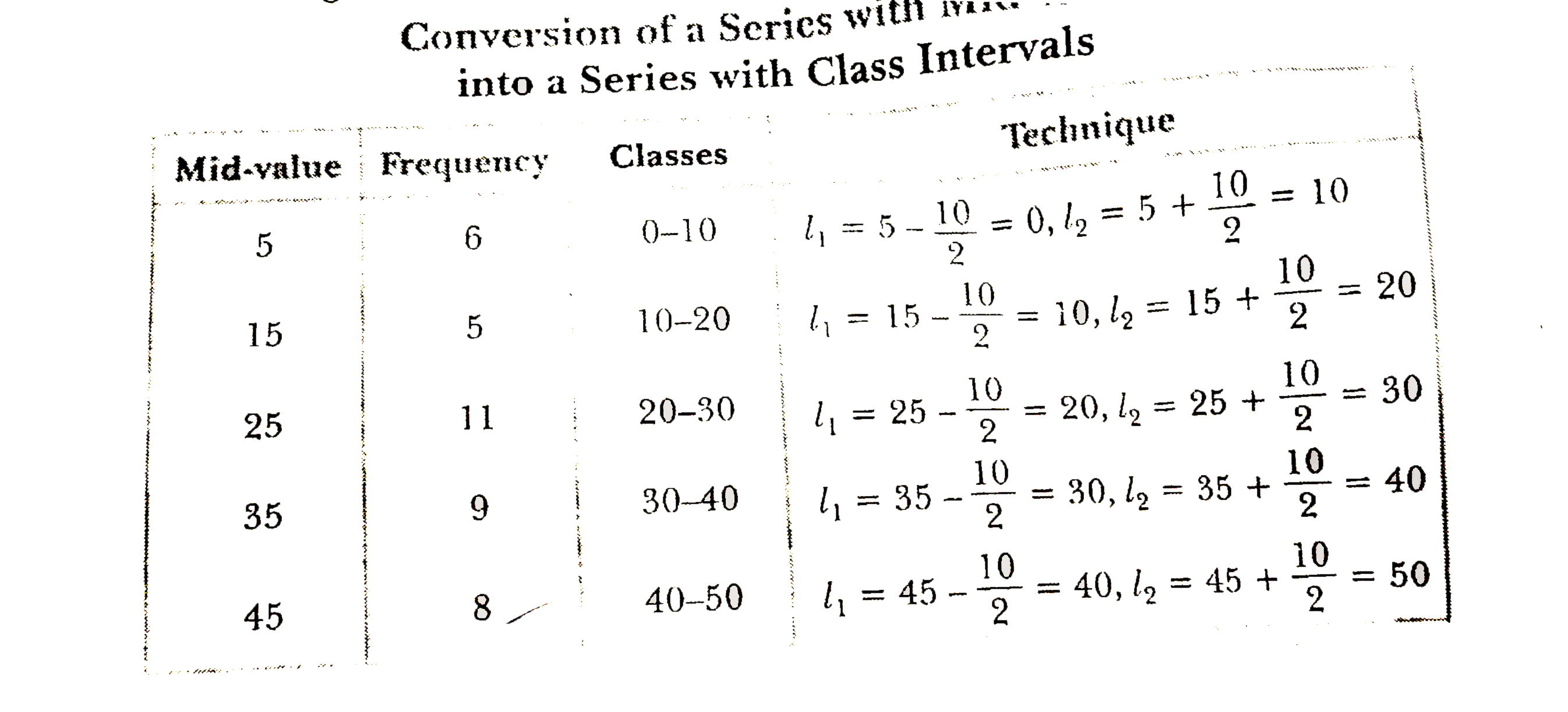Saved Bookmarks
| 1. |
Such series may be converted into simple frequency series using the following method: (i) First, mutual difference between mid-values (i), is determined, and (ii) Second, the difference so obtained is reduced to half (1/2i) which when deducted from the mid-value gives lower limit of the class interval and when added to the mid-value gives the corresponding upper limit. |
|
Answer» Solution :Thus,Lower limit: `l_1 = m-1/2i` Upper limit: `l_2=m+1/2i` where, m=mid-value, i=difference between mid-values, `l_1`=lower limit and `l_2` = upper limit. In the above frequency series with mid values, the MUTUAL difference between mid-values (i) 15 - 5=10. HALF of it is 5. Deducting 5 from each mid-value we GET lower limits and adding 5 to each mid-value we get the corresponding upper limits. Following table shows the process of this conversion. 
|
|
Discussion
No Comment Found
Related InterviewSolutions
- Assumption of ordinal apporch
- Critical appraisal of methods of collection of data
- Different between microeconomics and macroeconomics
- What happense when ic slops downwards
- Implications of perfect competition in forms of market
- If price of mango rises demand will ?
- What is statistical table? Explain briefly tha main characteristics of a good statistical table.
- What is production possibility curve
- Explain any three factor which affect the supply of a commodity
- What do you understand by the increasing returns to scale